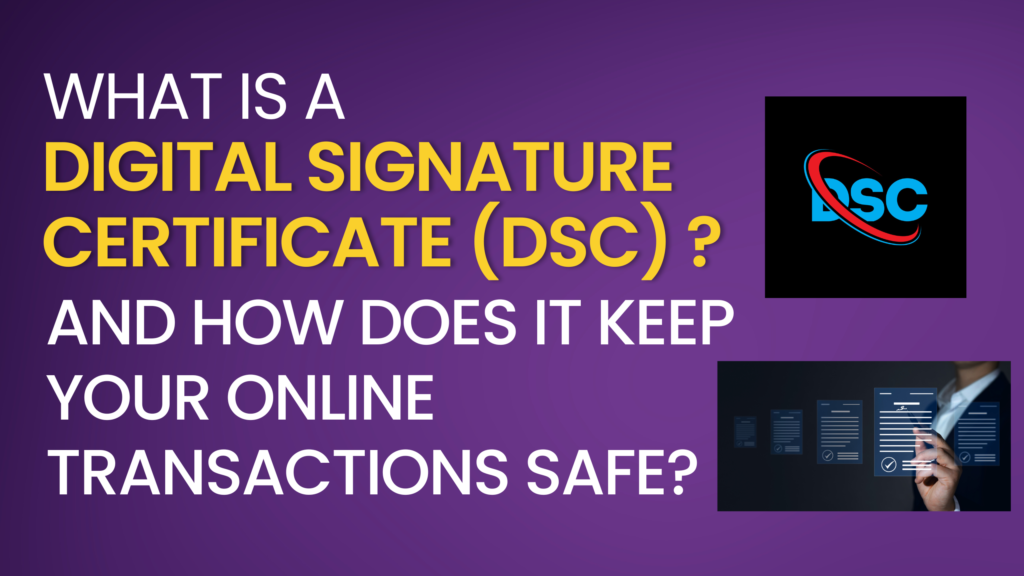
Introduction
Understanding Digital Signature Certificate (DSC)
Components of a Digital Signature Certificate
Public Key: At the heart of a DSC is a pair of cryptographic keys – a public key and a private key. The public key is freely distributed and used for verifying the digital signature, while the private key is securely held by the certificate holder.
Digital Signature: The digital signature itself is a unique encrypted code generated using the private key. It acts as a secure identifier, confirming the authenticity of the message or document and ensuring that it has not been altered during transmission.
Certificate Authority’s Digital Signature: To enhance trust and security, the DSC also includes a digital signature from the issuing Certificate Authority. This validates that the public key in the certificate indeed belongs to the entity identified in the certificate.
Identification Information: The DSC contains information about the certificate holder, such as their name, public key, the name of the Certifying Authority, and the expiration date of the certificate.
How Digital Signature Certificates Work
Key Pair Generation: The certificate holder generates a pair of cryptographic keys – a public key and a private key. The public key is shared with others, while the private key is kept confidential.
Certificate Application: The entity applies for a DSC from a Certifying Authority. The CA verifies the identity of the applicant through a stringent process before issuing the certificate.
Digital Signature Creation: When the certificate holder wants to sign a document or message, the private key is used to generate a unique digital signature.
Message or Document Transmission: The digitally signed message or document is transmitted along with the public key and the DSC.
Verification by Recipient: The recipient of the message or document uses the public key in the DSC to verify the digital signature. If the verification is successful, it confirms the authenticity of the sender and the integrity of the content.
Importance of Digital Signature Certificates
Authentication: DSC ensures the identity of the sender, assuring the recipient that the communication is from a legitimate source.
Integrity: The digital signature message or document has not been altered during transmission.
Non-Repudiation: The certificate holder cannot deny their involvement in the transaction, providing legal validity to digital signatures.
Security: Asymmetric encryption ensures a high level of security, making it difficult for unauthorized parties to forge digital signatures.
